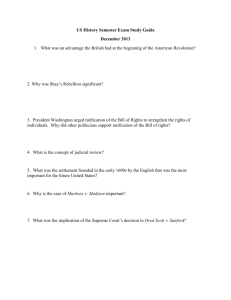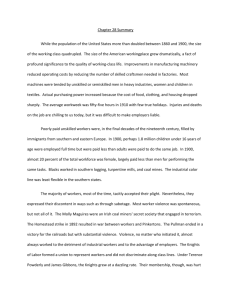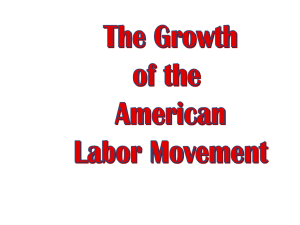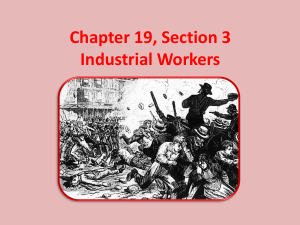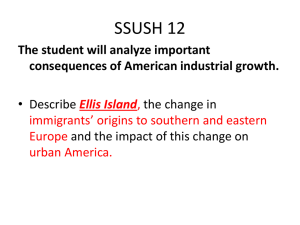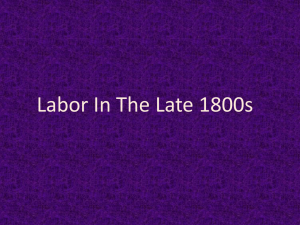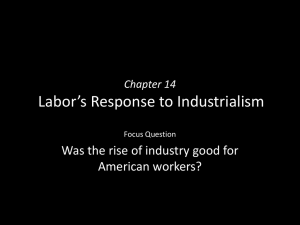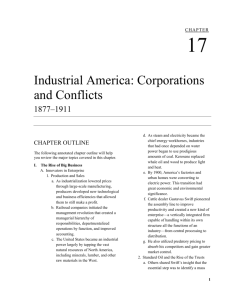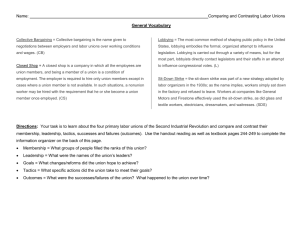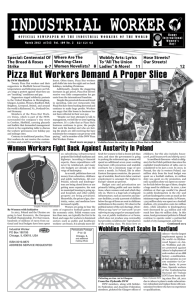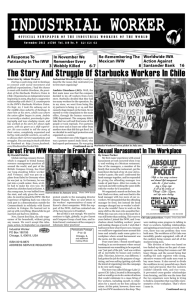Industrial America
advertisement
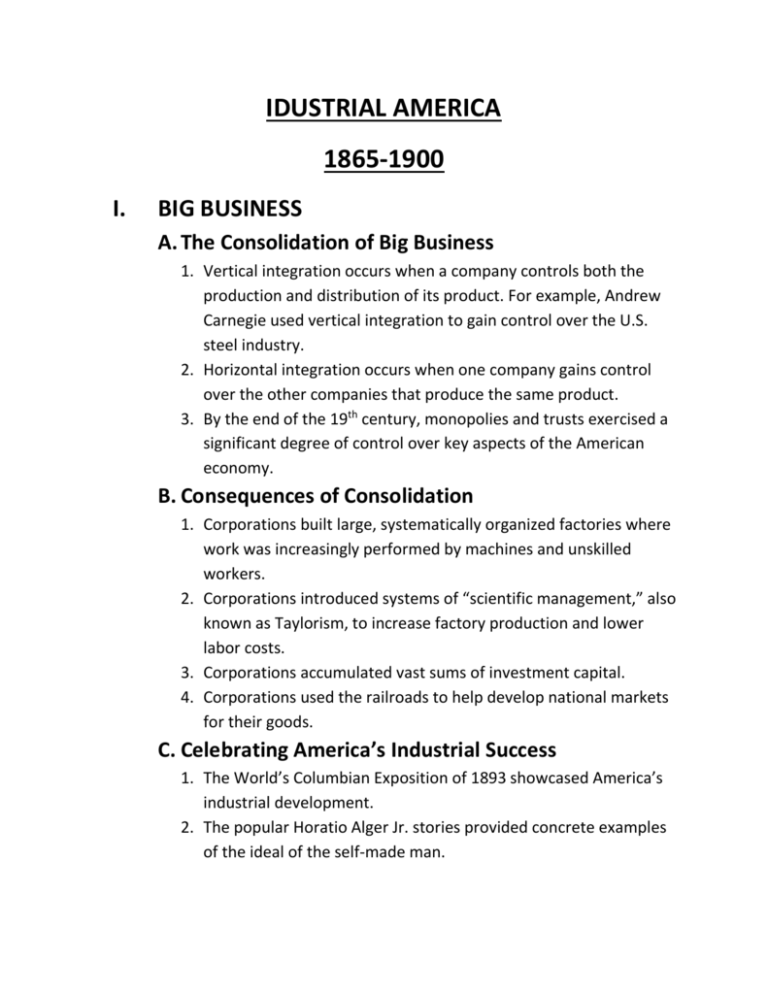
IDUSTRIAL AMERICA 1865-1900 I. BIG BUSINESS A. The Consolidation of Big Business 1. Vertical integration occurs when a company controls both the production and distribution of its product. For example, Andrew Carnegie used vertical integration to gain control over the U.S. steel industry. 2. Horizontal integration occurs when one company gains control over the other companies that produce the same product. 3. By the end of the 19th century, monopolies and trusts exercised a significant degree of control over key aspects of the American economy. B. Consequences of Consolidation 1. Corporations built large, systematically organized factories where work was increasingly performed by machines and unskilled workers. 2. Corporations introduced systems of “scientific management,” also known as Taylorism, to increase factory production and lower labor costs. 3. Corporations accumulated vast sums of investment capital. 4. Corporations used the railroads to help develop national markets for their goods. C. Celebrating America’s Industrial Success 1. The World’s Columbian Exposition of 1893 showcased America’s industrial development. 2. The popular Horatio Alger Jr. stories provided concrete examples of the ideal of the self-made man. II. LABOR AND LABOR UNIONS, 1865-1900 A. Key Trends 1. Immigrants, women, and children significantly expanded the labor force. 2. Machines increasingly replaced skilled artisans. 3. Large bureaucratic corporations dominated the American economy. 4. Corporations developed national and even international markets for their goods. B. The Knights of Labor 1. The Knights were led by Terence V. Powderly. Under his leadership, the Knights grew rapidly, peaking at 730,000 members in 1866. 2. The Knights grew rapidly because of their open-membership policy, the continuing industrialization of the American economy, and the growth of urban population. 3. The Knights welcomed unskilled and semiskilled workers, including women, immigrants, and African Americans. 4. The Knights were idealists who believed they could eliminate conflict between labor and management. Their goal was to create a cooperative society in which laborers, not capitalists, owned the industries in which they worked. C. The industrial Workers of the World 1. The Industrial Workers of the World (IWW) was led by “Mother” Jones, Elizabeth Flynn, and Big Bill Haywood. 2. Like the Knights of Labor, the IWW strove to unite all laborers, including unskilled African Americans, who were excluded from craft unions. 3. The IWW’s motto was: “An injury to one is an injury to all,” and its goal was to create “One Big Union.” 4. Unlike the Knights, IWW (or Wobblies) embraced the rhetoric of class conflict and endorsed violent tactics. 5. IWW membership probably never exceeded 150,000 workers. The organization collapsed during World War I. D. The American Federation of Labor 1. The American Federation of Labor (AFL) was led by Samuel Grompers, the leader of the Cigar Makers Union. 2. The AFL was an alliance of skilled workers in craft unions. 3. Under Grompers’ leadership, the AFL concentrated on bread-andbutter- issues such as higher wages, shorter hours, and better working conditions. Test Tip! - It is very important to understand the similarities and differences among the Knights of Labor, Industrial Workers of the World, and the American Federation of Labor. All three were dedicated to organizing laborers. The knights and the IWW both attempted to organize all skilled and unskilled workers into one union. However, the Knights strove for a cooperative society, while the IWW embraced class conflict and violent tactics. In contrast, the AFL organized skilled workers, repudiated violence, and fought for higher wages and better working conditions. E. The Pullman Strike, 1894 1. During the late 19th century, the American labor movement experienced a number of violent strikes. The two best-known strikes were the Homestead Strike (1892) and the Pullman Strike (1894). 2. When the national economy fell into a depression, the Pullman Palace Car Company cut wages while maintain rents and prices in a company town where 12,000 workers lived. This action precipitated the Pullman Strike. 3. The Pullman Strike halted a substantial portion of American railroad commerce. 4. The strike ended when President Cleveland ordered federal troops to Chicago, ostensibly to protect rail-carried mail but, in reality, to crush the strike. III. IMMIGRATION A. The New Immigrants 1. Prior to 1880, most immigrants to the United States came from the British Isles and Western Europe. 2. Beginning in the 1880s, a new wave of immigrants left Europe for America. The so-called New Immigrants came from small towns and villages in southern and eastern Europe. The majority lived in Italy, Russia, Poland, and Austria-Hungary. 3. The New Immigrants primarily settled in large cities in the Northeast and Midwest. 4. Very few New Immigrants settled in the South. B. The Chinese Exclusion Act of 1882 1. This was the first law in American history to exclude a group from America because of ethnic background. 2. The act prohibited the immigration of Chinese to America. 3. Working-class Americans who felt threatened by Chinese workers strongly supported the law. 4. Support for the law was particularly strong in California. C. Nativist Opposition to the New Immigrants 1. Nativists had previously opposed Irish and German Catholic immigrants. 2. Nativists opposed the New Immigrants for the following reasons: The immigrants were heavily Catholic and Jewish. They spoke different languages and practiced different cultural traditions. They did not understand American political traditions. They threatened to rake away jobs because they were willing to work for low wages. IV. THE NEW INDUSTRIAL ORDER: SUPPORTERS AND REFORMERS A. Social Darwinism 1. Social
